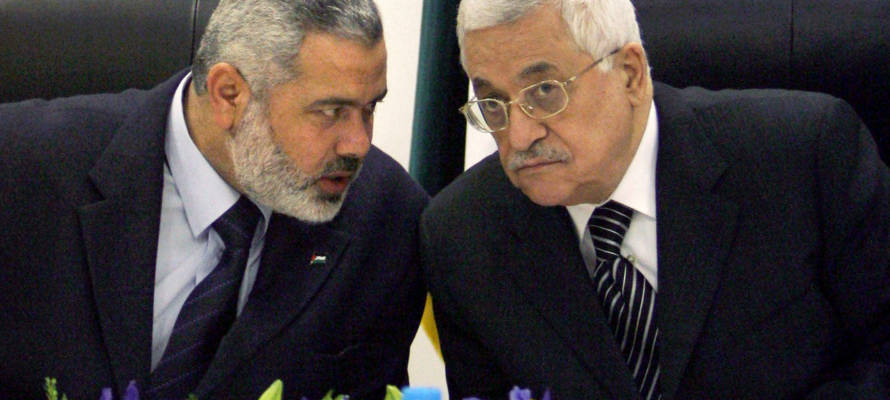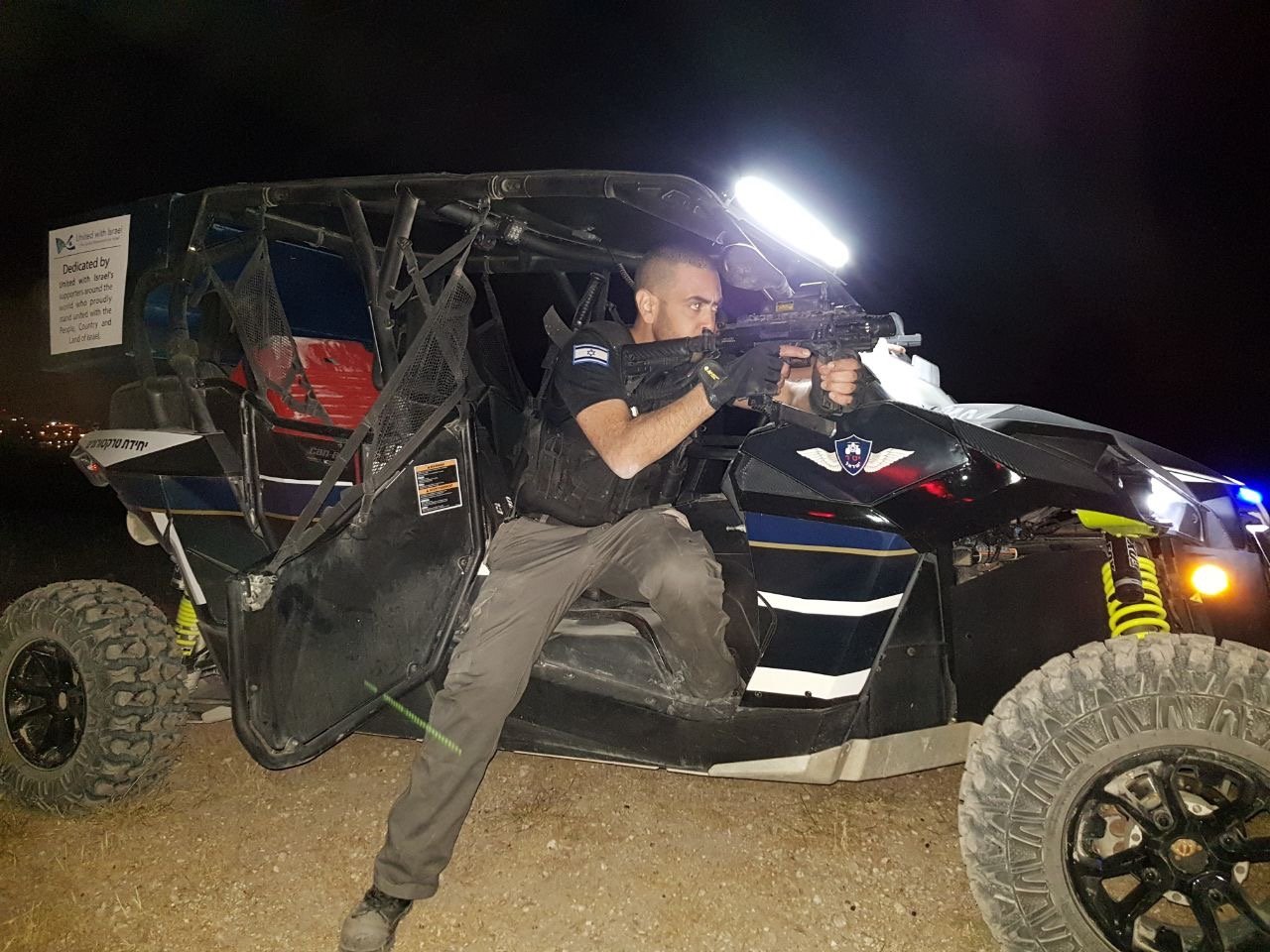They disagree on many things, but when it comes to repressing and violating the human rights of their people, Hamas and Fatah have proven that they are comrades-in-arms.
By Khaled Abu Toameh, The Gatestone Institute
Hamas and Fatah, the two major Palestinian parties ruling the Gaza Strip and West Bank (Judea and Samaria) respectively, have been at war with each other for the past 12 years. They disagree on many things, but when it comes to repressing and violating the human rights of their people, Hamas and Fatah have proven that they are comrades-in-arms.
In the past week, Fatah has been launching scathing attacks on Hamas for using excessive force to suppress Palestinians protesting economic hardship in the Gaza Strip. Fatah says that hundreds of Palestinians, including political activists and journalists, have been arrested or severely beaten by Hamas security forces.
The charges against Hamas are not baseless. Photos of wounded Palestinians have surfaced on social media. Some had black eyes and bruises over different parts of their bodies, while others appeared to have had their legs and arms broken by Hamas security officers.
The latest victim of Hamas’s violent repression of the protests, which are being held under the banner, “We Want to Live!”, is senior Fatah official Atef Abu Seif. Abu Seif, who is also a renowned novelist, was reportedly kidnapped from his home and badly beaten by Hamas militiamen on March 18. According to some Fatah officials, the assailants broke his arms and legs; Abu Seif is reported to be hospitalized, in serious condition.
Fatah has also published photos of dozens of Palestinian men, women and children who say they have been badly beaten by Hamas security forces during the recent protests organized by youth movements demanding a solution to the high cost of living, the high rate of unemployment and new taxes imposed by the rulers of Hamas on the two million residents of the Gaza Strip.
Several Palestinian journalists and human rights activists in the Gaza Strip have also fallen victim to Hamas’s brutal measures, which seem aimed at crushing the protests and deterring Palestinians from speaking out against the rulers of the Hamas-controlled coastal enclave.
One of the human rights activists who was physically assaulted by Hamas security forces is Jamil Sarhan, director of the Palestinian Independent Commission for Human Rights. The human rights group said that the Hamas officers also confiscated Sarhan’s mobile phone and arrested another one of its members, the attorney Baker Turkeman.
The Fatah-dominated Palestinian Journalists Syndicate says that at least 17 journalists in the Gaza Strip have been targeted by Hamas in the past week. Seven of the journalists were arrested for their role in covering the protests: Osama Kahlout, Ehab Fasfous, Ahmed Sahmoud, Majed Kdeih, Juma’a Daloul, Mustafa al-Dahdouh and Ahmed al-Shinbari. The syndicate said that several journalists were beaten and had their mobile phones confiscated by Hamas security officers, who tried to prevent them from covering the protests. Another four journalists have been placed under house arrest, the syndicate added.
Hamas’s repressive and violent actions against Palestinians protesting poverty and unemployment is not something that should surprise anyone, particularly those familiar with the authoritarian regime of Hamas, an offshoot of the Muslim Brotherhood. The real shock would have been if Hamas had allowed Palestinians living under its rule in the Gaza Strip to take to the streets to demand an improvement in their living conditions.
Since its violent takeover of the Gaza Strip in 2007, the part of the Palestinian Authority (PA) that is Hamas, which rules the Gaza Strip, has employed an iron-fisted policy against its political opponents and anyone who dares to challenge its rule.
PA Hardly Distinguishable from Hamas
Yet, in Judea and Samaria, the same Palestinian Authority and its ruling Fatah faction, who are now strongly criticizing Hamas for its oppressive measures against protesters, are hardly distinguishable from their rivals in the Gaza Strip.
Like Hamas, the PA security forces in Judea and Samaria have also been engaging in systematic targeting of Palestinian journalists and political opponents. The most recent victims of the PA crackdown on journalists are Hazem Nasser and Amer Abu Arafeh. Since just the beginning of this year, the Palestinian Authority security forces have already arrested at least nine journalists in the West Bank, according to the Palestinian Committee for Supporting Journalists.
Like Hamas, the PA has also been using force on protesters. During 2018, PA security forces used force to disperse thousands of Palestinians who took to the streets in the West Bank to protest President Mahmoud Abbas’s sanctions against the Gaza Strip. The sanctions include, among other restrictions, cutting salaries and welfare payments to thousands of Palestinian employees and families in the Gaza Strip.
Scenes of Palestinian Authority police officers beating men, women and children are not unfamiliar. As in the Gaza Strip, Palestinians in the West Bank have accused the PA security forces of using batons and tear gas against the protestors. The photos and videos documenting the recent Hamas violence against protestors in the Gaza Strip are similar to those from the West Bank, where PA security officers are seen assaulting demonstrators.
Like Hamas, the Palestinian Authority has also resorted to torture to crush political opponents and dissent. Human rights groups have documented dozens of cases of torture and harassment in PA prisons in recent years. According to a recent report published by Human Rights Watch:
“In the West Bank, some of the harshest treatment reported by detainees occurs at the Joint Security Committee detention facility in Jericho, where officers subject detainees to regular shabeh [in which a kneeling prisoner’s hands are tied behind him to his ankles] and long stints in small solitary cells cut off from others.”
The report concludes that when it comes to torture and human rights violations, there is no difference between the PA and Hamas:
“Both the Fatah-dominated PA in the West Bank and Hamas in Gaza have in recent years have carried out scores of arbitrary arrests for peaceful criticism of the authorities, particularly on social media, among independent journalists, on university campuses, and at demonstrations.”
Heightened Tensions Between Fatah and Hamas
The recent economic protests in the Gaza Strip have further exacerbated tensions between Fatah and Hamas, making it absurd even to talk about the possibility of reconciliation between the two rival parties. Hamas is defending its right to beat women and children and to break the bones of its political rivals, while the Palestinian Authority and Fatah are continuing to employ similar tactics against Palestinians in the West Bank.
Hamas is now accusing the PA and Fatah of exploiting the economic crisis in the Gaza Strip to call on Palestinians to overthrow the Hamas regime. Fatah, for its part, is accusing the “dark forces” of Hamas of acting on orders from outside parties to establish a separate Palestinian state in the Gaza Strip.
The US administration says it will publish its long-awaited plan for peace in the Middle East, known as the “Deal of the Century,” after the general elections in Israel on April 9. Perhaps it would be a good idea if the US administration came up with a plan to make peace between Palestinians and Palestinians before attempting to make peace between the Palestinians and Israel.
What is clear, meanwhile, is that the Fatah and Hamas leaders are more interested in warring with each other than improving the living conditions of their people. The two groups have already rejected the upcoming “Deal of the Century”: for now, that is the only deal they seem ready to make.
Khaled Abu Toameh, an award-winning journalist based in Jerusalem, is a Shillman Journalism Fellow at Gatestone Institute.
Life-Saving ATVs Stop Terrorists Before they Attack Innocent Israelis
Palestinian attackers have terrorized Israelis with stabbings, shootings, bombings and car-rammings throughout Israel, with no end in sight.
Specialized, state-of-the-art, compact, all-terrain ATVs that maneuver in tight spaces are Israel’s “secret weapon,” designed to pursue and capture terrorists BEFORE they attack. Life-saving ATVs are desperately needed to protect communities throughout Israel. Please donate generously!

